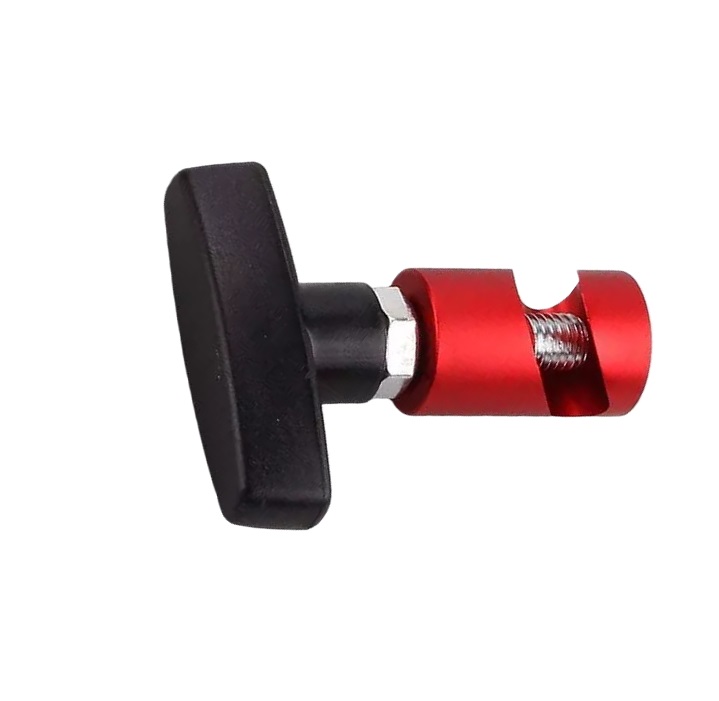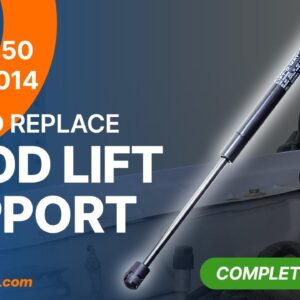One of the most important places to check fluid levels, belts and hoses, etc. is under the hood, where you’ll find the engine, battery, etc. Many vehicles have hood props, even today. Others have hood struts – those hydraulic springs with polished pistons that vaguely resemble a skinny shock absorber.
What Are Hood Struts?
Hood struts, also known as hood lift supports or hood shocks, keep the car hood open and support its weight while you work in the engine compartment. There are three main types of lift hoods: gas, hydraulic, and mechanical. SUV liftgates and the liftgate glass also use struts, as rear hatches, and the same rules apply as with hood struts.
- Gas supports are typically filled with gas (usually nitrogen) to create the pressure needed to keep the hood stable and prevent it from collapsing.
- Hydraulic supports are similar to gas supports, but they use hydraulic fluid to keep the hood open. They’re more durable than gas struts.
- Mechanical lift supports use a spring mechanism to hold the hood and are more common in older cars. Mechanical supports may also have a built-in prop rod. People with failed hood supports will usually find a mechanical way to keep the hood open.
Advantages of Using Hood Struts
Using hood struts improves safety and convenience. It also increases the hood’s lifespan.
Improved Safety
Did you know that sedan hoods weigh up to 40 pounds, while pickup trucks go as high as 70 pounds? This means working on your engine and having the hood fall on your head or even your hands can lead to some serious injuries. Many hoods, even as far back as the 1990s, are aluminum, but that doesn’t mean you want one falling on your head.
Propping the hood up with hood struts helps prevent accidents. The struts also protect certain components, as the impact of the hood suddenly closing can damage them.
Of course, hood struts that are beginning to fail can cause the hood to seem as if it will stay open and then suddenly allow it to close without warning.

Convenient
Hood struts are also convenient to use because they eliminate the need for a prop rod. They let you easily access the engine bay, making it easier to perform maintenance and repairs. On the other hand, prop rods never need replacing.
In the same vein, hood struts are easy to use because you’ll only need to open the hood, pop the latch, and then lift it. And once you’re done, you can manually lower the hood to close it.
Increase the Hood’s Longevity
Lastly, you’re doing the hood a favor by using the hood struts because they reduce the strain on the hood from repeated lifting and closing. This means you’re essentially extending the hood’s lifespan each time you use the struts instead of manually lifting and closing the hood.
When to Replace the Hood Struts
Like any car parts, hood struts won’t last forever. Some common issues struts face include leaks, failure to hold the hood open, or difficulty closing the hood. For the leaks, it’s usually due to the seals wearing out and gas finding a place to escape.
Needless to say, leaks result in struts not functioning well and a dwindling lifespan. Usually, it takes about three to five years before you need to consider changing the struts. However, various issues can affect their performance and require you to replace them sooner.
How to Install or Replace Hood Struts
If your car doesn’t come with a hood strut or the one installed is damaged, it might be time to install a new strut or replace the old one. Luckily, installation and replacement are easy processes that overlap.
While the steps may differ depending on the car model, here’s how the process usually goes:
- Step 1: Find the part number of the hold strut to ensure it matches your hood. If you’re installing a new strut, check the owner’s manual to get your hood’s weight and size. Also, consider your car’s required lift support to ensure the new strut matches.
- Step 2: Use a prop rod or have someone hold the hood open to ensure it stays up.
- Step 3: Find the clips/bolts securing the old struts to the hood and use a screwdriver to pry the clips off. You might also need a wrench to remove the bolts and detach the old struts.
- Step 4: Attach the new struts to the mounting points. If they come with ball pivots, install them first by threading them into the existing holes. Snap the new struts onto the ball pivots or secure them with bolts, depending on the design.
- Step 5: Test the new struts by lowering the hood to check if they support it properly. Open and close the hood a few times to ensure the struts work smoothly.
How to Maintain Hood Struts
To keep the hood struts in good condition, clean and lubricate them regularly, inspect them for damage often, and test them frequently.
Regular Cleaning
Regular cleaning can prevent dust and debris from accumulating and causing wear. A good way to clean the struts is by wiping it with a damp cloth. You can remove the struts first by following the steps mentioned above.
But usually, no matter how much you clean a strut, it still fails if it’s going to, so don’t expect to do much good by just keeping it clean. The seal on the piston keeps the polish rod clean anyway by design.
Lubrication
Proper lubrication reduces friction and prevents the seals from drying out, prolonging the struts’ lifespan. To add lubrication, you can apply a light oil or silicone spray to the strut shafts. Use a degreaser to clean the pivot points and ball joints before applying grease to ensure smooth operation. Keep in mind though that adding lubrication alone won’t do much, since the strut is self-lubricating anyway.
Inspection
Regularly check the struts for wear or damage, like leaks or difficulty holding the hood open. Once you notice any issue, it might be best to replace the struts before they cause an accident while you’re checking things under the hood.
Test Operation
Lastly, periodically open and close the hood to ensure the struts are still functioning. Listen for any unusual noises that may indicate a problem.
Get Hood Struts That Perfectly Fit Your Vehicle
While your vehicle can still run with faulty hood struts, it’s best to replace them as soon as possible. The last thing you want is for the hood to fall on your head or your hands as you work on the engine. Luckily, you can avoid going through the pain of that by simply replacing your hood struts with brand-new ones from CarParts.com.
At CarParts.com, you’ll find a wide selection of high-quality hood lift supports at different price points. For an easier browsing experience, be sure to use our built-in vehicle selector. All you have to do is input your vehicle’s year, make, and model, and you’ll see all the available hood struts that are compatible with your ride. Our easy-to-navigate website allows you to place an order with just a few clicks.
Don’t wait until your hood struts completely fail before getting new ones. Check out our catalog of high-quality hood struts at CarParts.com and order one that fits your vehicle today!
Any information provided on this Website is for informational purposes only and is not intended to replace consultation with a professional mechanic. The accuracy and timeliness of the information may change from the time of publication.

































